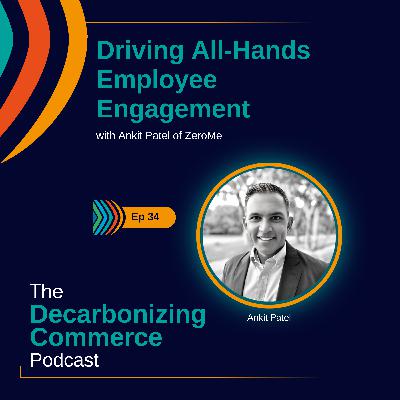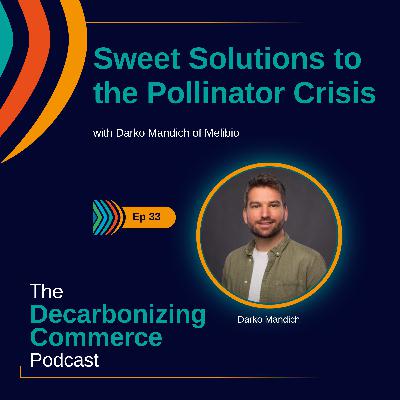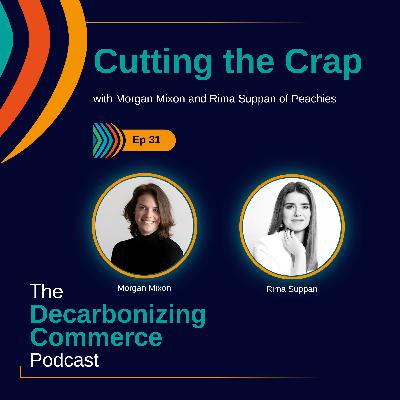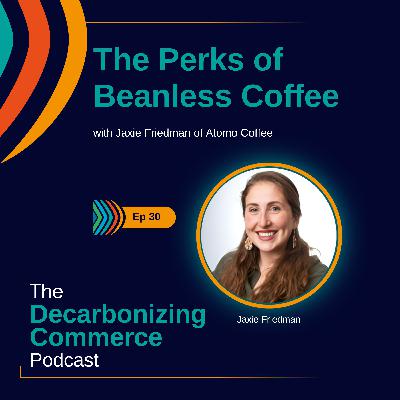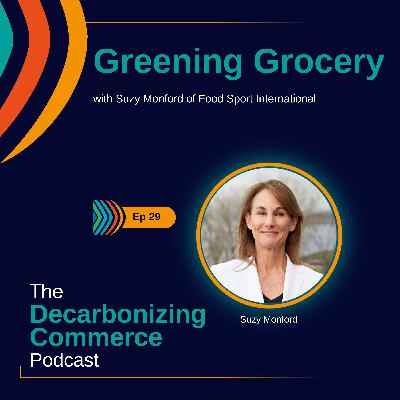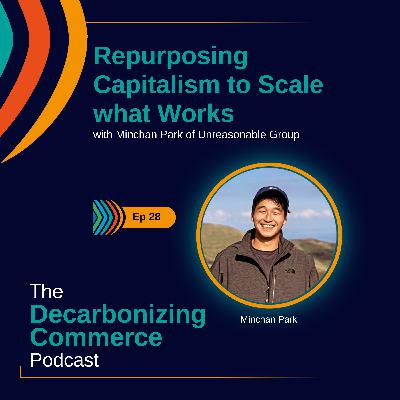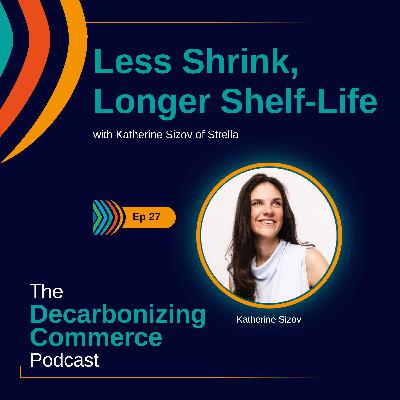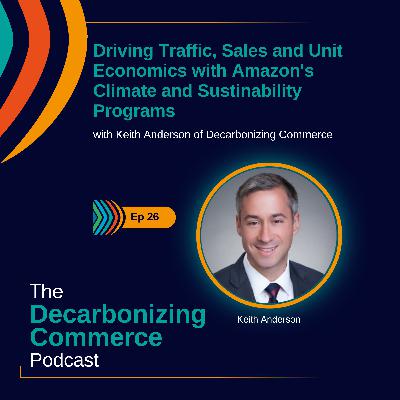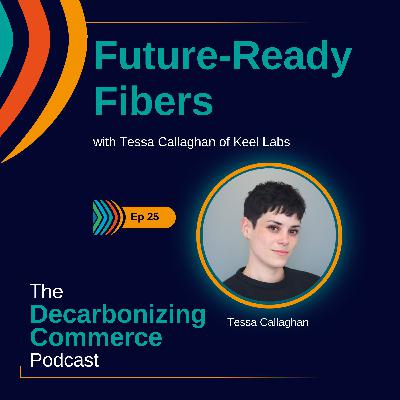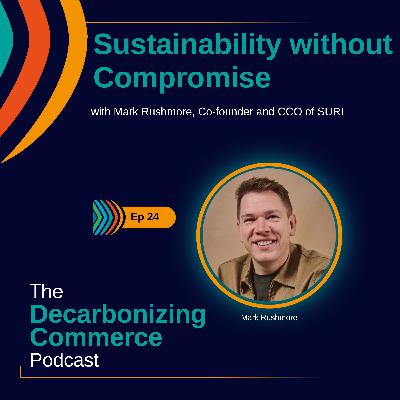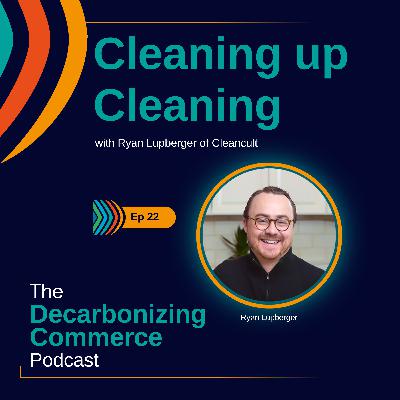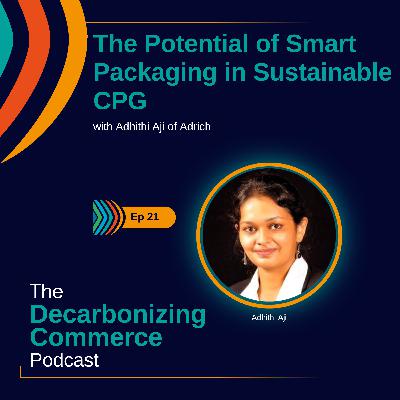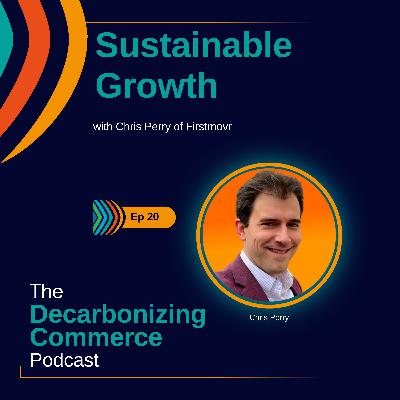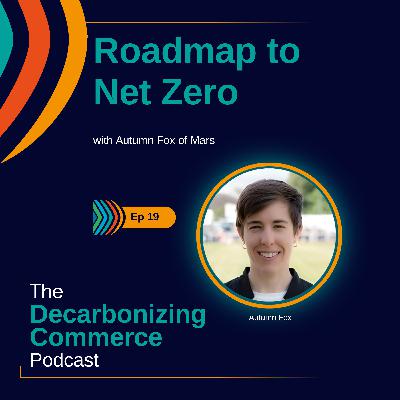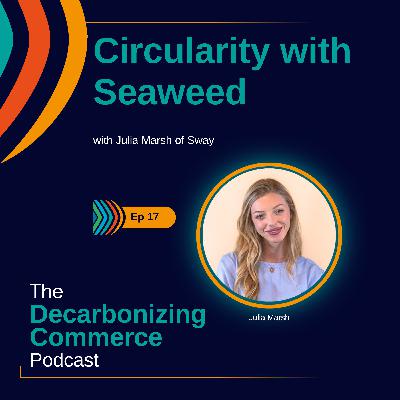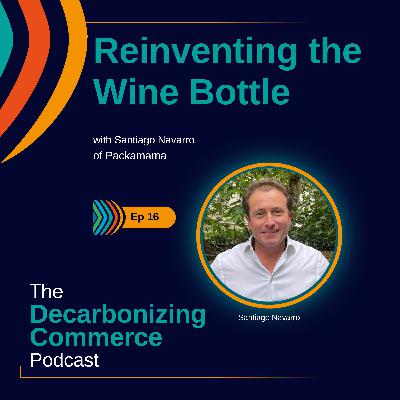Calculating and Communicating Food Emissions with Matthew Isaacs of My Emissions
Update: 2024-04-11
Description
In this episode of Decarbonizing Commerce, host Keith Anderson welcomes Matthew Isaacs, co-founder of My Emissions, to discuss the critical intersection of climate innovation and commerce, focusing on the environmental impact of food production and consumption. Matthew shares how his journey with My Emissions began during the COVID-19 pandemic when he and his co-founder sought ways to reduce their environmental footprint. Recognizing that food accounts for a significant portion of global greenhouse gas emissions, they developed My Emissions to help food businesses calculate and communicate product-level emissions. The platform aims to bridge the gap between emissions data and consumers, empowering businesses to make informed sustainability decisions while engaging customers through carbon labeling. Matthew highlights the platform's dual focus on emissions data and communication, enabling companies to navigate sustainability challenges and drive meaningful change and the importance of transparency and collaboration in achieving a low-carbon future for the food industry.
Learn more about Matthew Isaacs:
- Link to My Emission’s website
- Link to Matthew’s LinkedIn
To listen to the full episode join our Plus or Pro memberships at decarbonize.co:
If you enjoyed this episode then please:
- Follow, rate, and review on Apple Podcasts
- Follow and rate on Spotify
- Learn more about Decarbonizing Commerce at decarbonize.co
TRANSCRIPT BELOW:
Keith Anderson: Welcome to Decarbonizing Commerce, where we explore what's new, interesting, and actionable at the intersection of climate innovation and commerce. I'm your host, Keith Anderson, and together we'll meet entrepreneurs and innovators reinventing retail, e-commerce, and consumer products through the lenses of low carbon and commercial viability.
Welcome to the Decarbonizing Commerce podcast. I'm Keith Anderson, and my guest this week is Matthew Isaacs, co-founder of My Emissions, which helps food manufacturers, retailers, and restaurants calculate and communicate product- and menu-item-level emissions. And this is a topic that remains really interesting to me for a handful of reasons. Number one, food is a huge source of emissions globally, one of the largest sources of emissions within retail and consumer products. Secondly, the value chain represents a huge percentage of those emissions, and it can be challenging and complicated to calculate those emissions.
And thirdly, labeling and communicating emissions for consumers with the objective of changing behavior is something that really interests me. You know, we've seen, nutrition and health and wellness schemes meet with varying degrees of success, and they have varying levels of standardization, country to country, retailer to retailer.
And so I'm always eager to speak with anybody that is actively working in that space, or studying what works, and Matthew is one of those people. So, I'm very excited for you to meet Matthew Isaacs, co-founder of My Emissions.
Well, Matthew, welcome to the podcast. Great to have you with us. Maybe to get us started, you can tell us a bit about how you ended up starting My Emissions.
Matthew Isaacs: Absolutely. So our story began with the COVID 19 pandemic. Myself and my co-founder, Nathan, we just started exploring how we could reduce our own environmental impact. The two of us are longstanding friends. We were both at Cambridge University together here in the UK, and we've always been data-minded.
We've always been thinking about what we can do to be more sustainable, to reduce our impact and how we can make a difference really to society. And in the context of having a lot of time on our hands, we have the concept of furlough here in the UK. And so we're working at the time, it really gave us the opportunity to start exploring what we could do to reduce our impact.
And we very quickly realised that food is the biggest and best way that individuals can reduce their impact. What we see is that around one third, 33 percent of all global greenhouse gas emissions are coming from food right now. And what really excited us is this idea that we weren't asking people to spend tens of thousands of pounds or dollars on solar panels or buying a new car or vehicle, changing their holiday habits, things that are very emotive, things that can cost a lot of money. Instead, what we can do is suggest simple swaps that often don't cost more money. And through that, we can actually quite quickly and significantly reduced our carbon footprint.
and that was our starting point. It was very much a personal, individual led, starting point. And over time we've really transitioned into being much more of a platform for food businesses. Because what we realized very quickly is that not only do consumers have this problem, but actually food businesses and companies that could be restaurants, brands, FMCG, They're all facing the same problem.
And there was this, ultimately what we saw is this big disconnect between emissions data from food in a research environment, and that data getting across to not only consumers, but also to food companies. And now that's really the gap that we're trying to fill with my emissions. We're trying to be the provider that can bridge that gap, that can, that is willing to open the can of worms that is emissions reporting and emissions labeling and digest all of that information and come out with something that's pragmatic, that's simple, and that can scale.
And that's where we've got to today.
Keith Anderson: So, I hear there's sort of two, legs to the platform. One of which is the emissions data itself. And the second is really about the communication and the labeling. So, why don't we take those one at a time. Is there something unique about food as an industry or as a category that leads you to focus on that specifically versus some of the industry- or category-agnostic solutions?
Matthew Isaacs: I think there is, and the first thing is food's wide impact, the second thing, and this is a real challenge, probably the biggest challenge in our work, is the fact that the majority of emissions are coming at the farm level. So when we look and measure the emissions of a product, we're looking at the emissions from farming, from manufacturing and production, from transport and distribution, and from packaging at a minimum. That we can also extend it and often can include your cooking emissions, your end of life and disposal as well. And, but the four that I said at the start, farming, processing, packaging, transport is the core of what we do. And the majority of the emissions for pretty much every food product we see is coming from the farming stage.
And what we also have then is quite a, an interconnected and global food system. So we see a lot of our clients, sourcing food from all over the globe, being two or three steps removed from their suppliers, or from the original farms, I should say. And given that's where the majority of the emissions lie, it really does lend itself to having a food-specific solution, because what we can do is build up a really comprehensive database of food emission factors, taken into account the very limited data that we can often get from our, from our clients, as in from food companies. But we can also build really targeted solutions to fill those gaps and to start really unlocking more primary data across the food sector. Maybe to bring this to life in a really, simple way. We work with restaurants and we work with brands.
And one of the common challenges, especially with so much new, novel, foods being introduced, was when a restaurant or catering provider started using a plant-based meat or a plant-based cheese, our key benefit, I guess, is the fact that we also work with a lot of brands. And that included some plant-based meats and some plant-based cheeses.
So rather than seeing these quite novel foods and then having to go away and spend a lot of time researching those ingredients and those foods, understanding supply chains, understanding recipes, we're actually able to leverage the data we're getting from some of our clients and make it available and use it in a more generalist way for our other clients.
And that was a real, challenge. value driver we're already finding for our clients, where because of our food sector specialism, we're able to unlock far more detailed and specific values, than maybe what your more agnostic sector, agnostic providers are able to offer.
Keith Anderson: And when you say food supply chain data, and I suppose we ought to focus on the farm since that's where it sounds like the bulk of the emissions originate. Are you looking at averages based on a particular crop or ingredient in a particular country? Are you actually working with your customer to engage their upstream suppliers and gather more information or primary data?
What does that look like in practice?
Matthew Isaacs:</
Comments
In Channel


